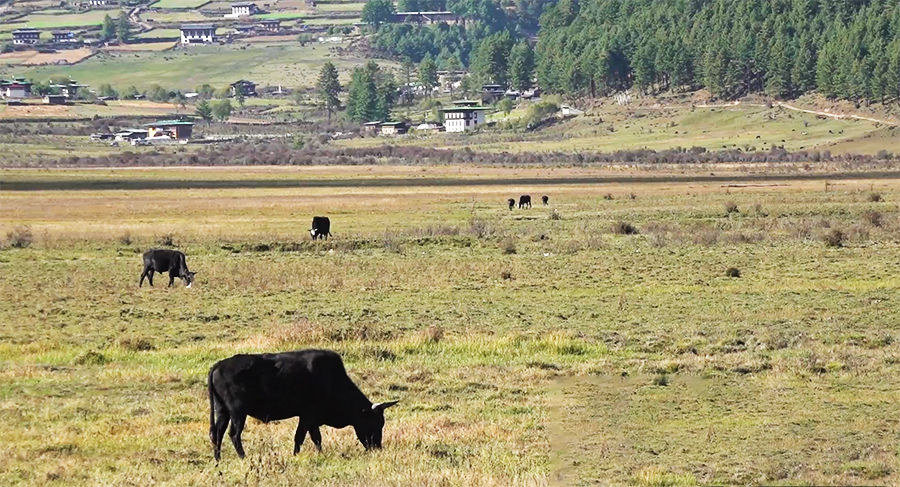 A recent study has revealed that agricultural and livestock income losses due to wildlife attacks in Gasa, Punakha, and Wangdue Phodrang have increased by 50 per cent compared to the 1990s. Another study highlighted the significant financial impact of wildlife depredation on farmers’ livestock income. These studies, conducted by the College of Natural Resources and the Tarayana Centre for Research and Development, were presented to local leaders and civil servants in seminars held in the three districts recently.
A recent study has revealed that agricultural and livestock income losses due to wildlife attacks in Gasa, Punakha, and Wangdue Phodrang have increased by 50 per cent compared to the 1990s. Another study highlighted the significant financial impact of wildlife depredation on farmers’ livestock income. These studies, conducted by the College of Natural Resources and the Tarayana Centre for Research and Development, were presented to local leaders and civil servants in seminars held in the three districts recently.
The first study, led by Tshering Zangmo, a PhD candidate at the College of Natural Resources in Lobesa, focused on the financial impact of human-wildlife conflict on farmers’ livelihoods. Over a three-year period from 2022 to last year, her research aimed to identify the wildlife species involved, assess the financial toll on rural communities, and explore potential adaptation and mitigation strategies.
The study was carried out at Laya Gewog in Gasa, Dzomi and Kabisa Gewogs in Punakha, and Gangtey and Phobji Gewogs in Wangdue Phodrang. Findings showed that wild boars and monkeys were primarily responsible for damaging crops, especially paddy and vegetables.
Tshering Zangmo, PhD Candidate of College of Natural Resources said “According to a study from the 1990s, agricultural income losses amounted to 18 percent annually. However, current losses have risen to 27 per cent. This significant increase indicates a serious issue.”
She added that since crops and livestock are a vital source of income for farmers, urgent intervention is necessary to mitigate these damages.
“If there is no funding to address this issue, it could lead to broader community development challenges. This might discourage people, lead to more people leaving rural areas, and result in labour shortages and other related problems.”
The second study carried out by Tshering Yangden, a researcher at the Tarayana Centre for Research and Development, revealed severe wildlife predation issues at Gangtey and Phobji Gewogs in Wangdue Phodrang. The study found that in 2023 alone, almost 1,200 domestic animals, mostly cattle and horses, were killed or attacked by predators including wild dogs, bears, and tigers. Stray dogs were also found to have killed or attacked domestic animals.
Tshering Yangden (PhD), Research Officer at Tarayana Foundation said “We took a census of how many animals were lost to these wild animals. So, we contacted more than 800 households within Gangtey and Phobji Gewogs and then we found out that there were more than 900 cattle including sheep and horses eaten by the dholes and then stray dogs have killed so many weak animals. Likewise, leopards have attacked nearly 300 cats and dogs.”
She mentioned that many issues go unreported due to the lack of a proper compensation system. She added that these losses, along with the depletion of livestock, will ultimately affect farmers’ financial income. The research findings and feedback gathered from the seminar will be submitted to the government as part of a policy brief.
The research, which falls under the theme of “Climate Change, Livelihood, Food Security, Agriculture and Organic Farming, Gender Dynamics, and Well-being,” was conducted with financial support from the International Development Research Centre.
Changa Dorji, Punakha
Edited by Kipchu









